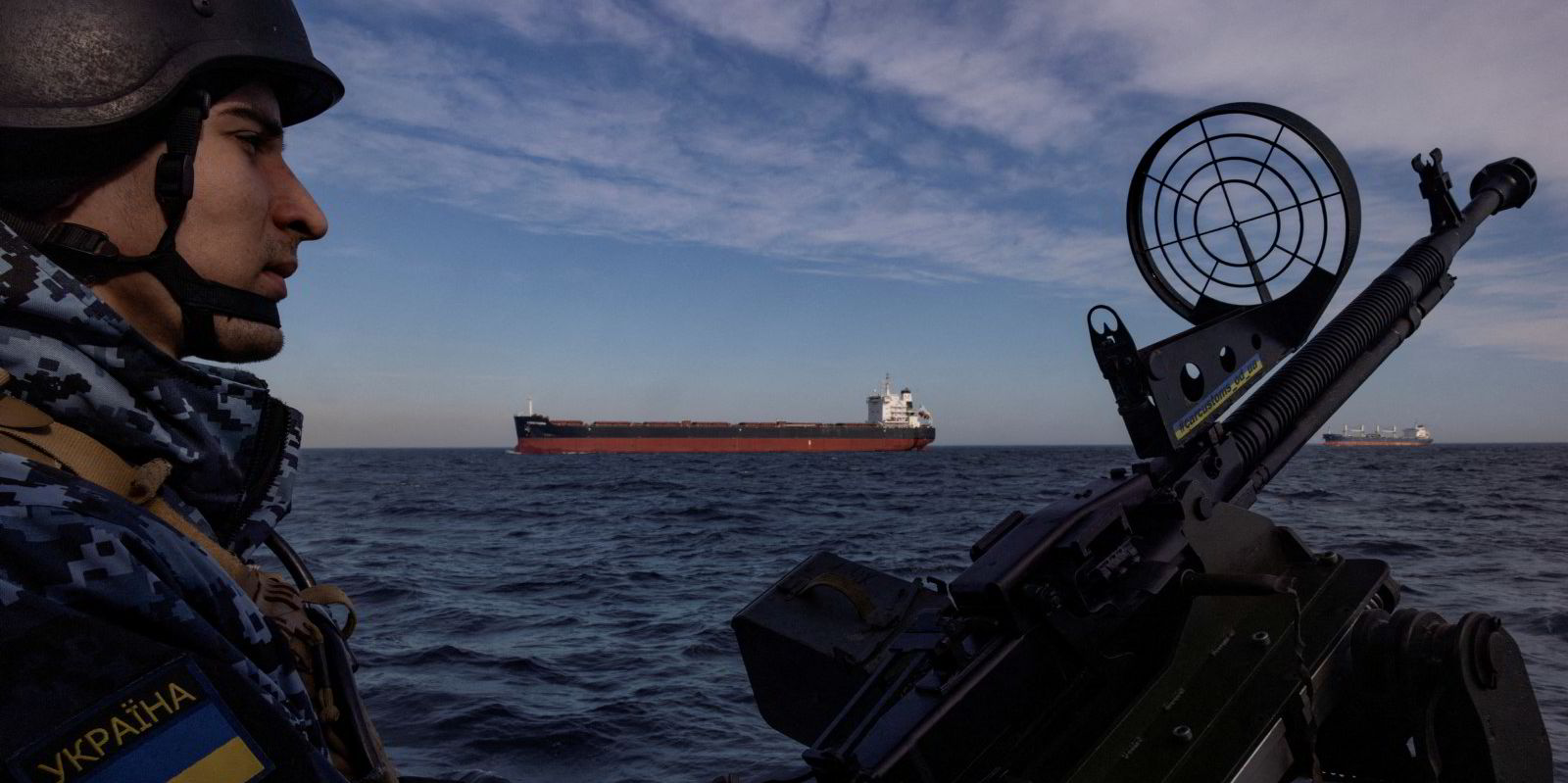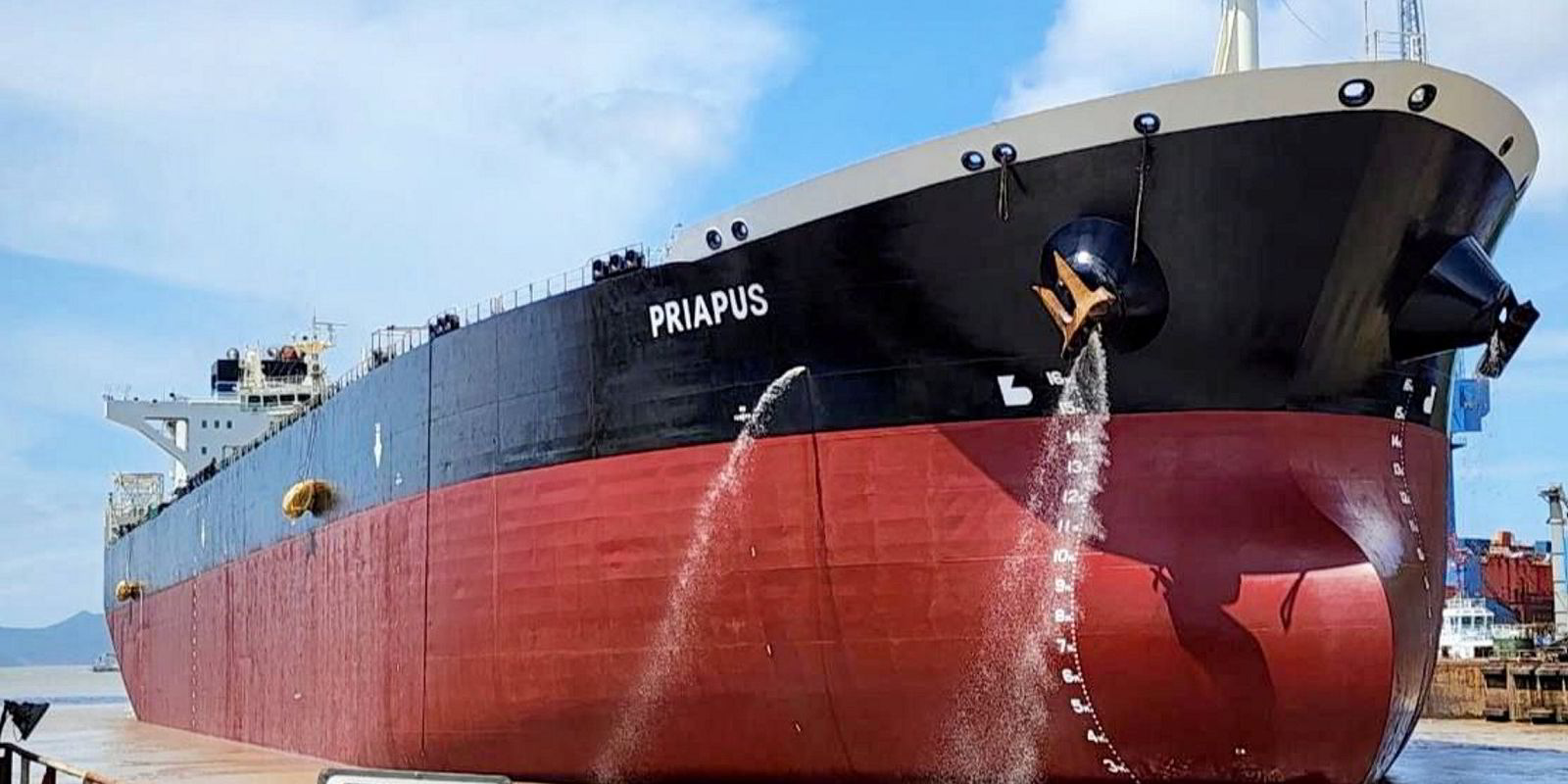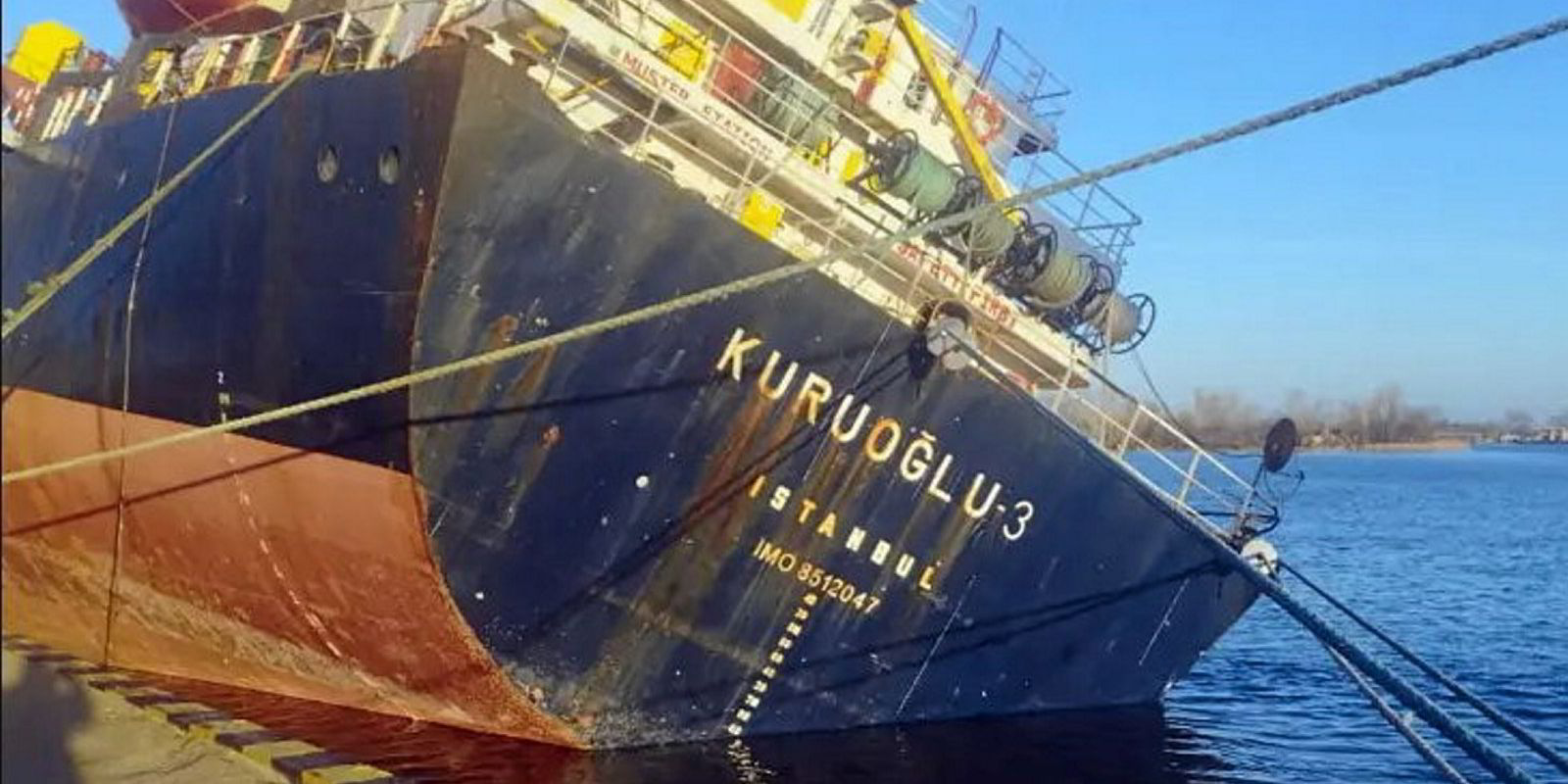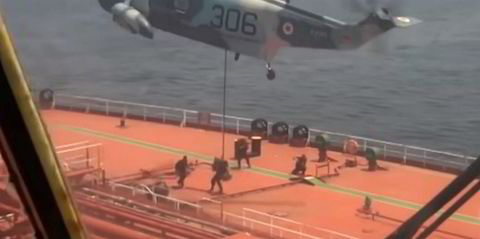Ukraine’s grain corridor has attracted more ship traffic in its first seven months than the United Nations-protected Black Sea Grain Initiative did throughout its entire year of operation before Russia pulled the plug.
According to UN and TradeWinds data as of 5 March, 991 outbound vessel trips, carrying 28.9m tonnes of cargo — mostly foodstuffs — left the three big Ukrainian ports of Odesa, Chornomorsk and Yuzhny/Pivdennyi.
At the current pace, it is only a matter of a day or two before Ukraine beats the Black Sea corridor’s 1,004 trips and 32.9m tonnes of cargo.
Russia had a chokehold on the maritime humanitarian grain corridor by curbing the number of UN inspections in Istanbul, where both inbound and outbound ships had to be cleared.
Under its own corridor, however, Ukraine has no such limits. Traffic volume depends largely on the weather and the cargoes available.
This begs the question of why Russia is not making any visible attempts to thwart the traffic, despite early threats that it would consider every Ukrainian cargo vessel a potential military target.
It is tempting to see this as a result of Kyiv’s successful naval drone campaign against Russian warships.
It is much more likely, however, that Russia is just tolerating the trade, for two reasons.
First, Moscow does not want to invite retaliation that would hinder its own flourishing grain trade in the Black Sea — including the Ukrainian territories it has annexed since 2014.
Second, Russia does not want to upset its friends and allies in China and the Middle East who are knee-deep in the Ukraine trade.
According to a TradeWinds analysis of the Ukraine corridor figures, Chinese shipping companies such as Fujian Ocean accounted for 44 outbound trips, transporting 12% of the total cargo carried.
Including grain carried to China by non-Chinese owners, a total of 4.82m tonnes of Ukraine exports, or 17% of the total, was transported.
Grain markets in Egypt, the biggest Arab nation, were even more lucrative, attracting 13% of Ukrainian exports so far.
Surprise, surprise
Just as under the Black Sea corridor, most Ukrainian grain transport is in the hands of Greek shipowners. More than 60 Hellenic companies account for one-quarter of all outbound voyages and one-third of exports.
The biggest among them, in terms of trips, is Evalend Shipping of Kriton Lendoudis, followed by the Stefanou brothers, as well as Andreas Hadjiyiannis.
Big first-tier names, however, have been absent from the trade, except for the odd vessel sent in by players such as Evangelos Marinakis’ Capital Group and Lou Kollakis’ Chartworld.
Turkish operators account for more trips than Greeks, with about 29% of the total. The small size of Turkish ships, however, means that they account for just 14% of all cargo.
The Turkish performance is nearly matched by a single German company, which has been the undisputed king of the trade so far.
Low-profile Blumenthal JMK was among the first firms to use the corridor to send out two bulkers that had been trapped there since the beginning of the war.
Blumenthal has kept up the pace since. According to TradeWinds estimates, the firm has sent 24 vessels on 42 trips to carry 3.2m tonnes of cargo, or 11% of the Ukraine corridor’s total.
As ship traffic increases, attracted by a modest freight rate premium of a few thousand dollars per day in the Black Sea trades, insurance premiums drop.
According to Marcus Baker, head of global marine insurance at Marsh, rates have sunk to below 1% from around 4% in July, when the grain corridor ended.
Chequered flags
It is not all plain sailing, however.
Vessels are still vulnerable in the three ports, the infrastructure of which the Russians frequently subject to drone and missile attacks. This was highlighted on 8 November, when a pilot died on board the 91,900-dwt bulker KMAX Ruler (built 2009).
Mines are a constant threat. Two seafarers were hurt in December when another ship in the corridor, the 8,800-dwt Vyssos (built 2007), hit a mine.
The poor quality of some of the vessels does not help either. The average age of the 560 ships that have used the corridor — many do the trip repeatedly — was 22.5 years. It is not rare to see vessels built in the 1970s leave Ukraine.
In late November, the 39-year-old, 6,300-dwt Raptor (built 1984) sank in the Aegean Sea heading towards Ukraine. All but one of its 14 seafarers was lost.
The Raptor was flying the flag of Comoros, which is on the Paris MoU’s flag blacklist.
Just over half of all Ukraine trips are under a black or grey Paris MoU flag. Given the small size of these ships, however, 41% of the trade’s vessels and nearly two-thirds of the cargo are on white-list ones.
Adam Corbett contributed to this article








